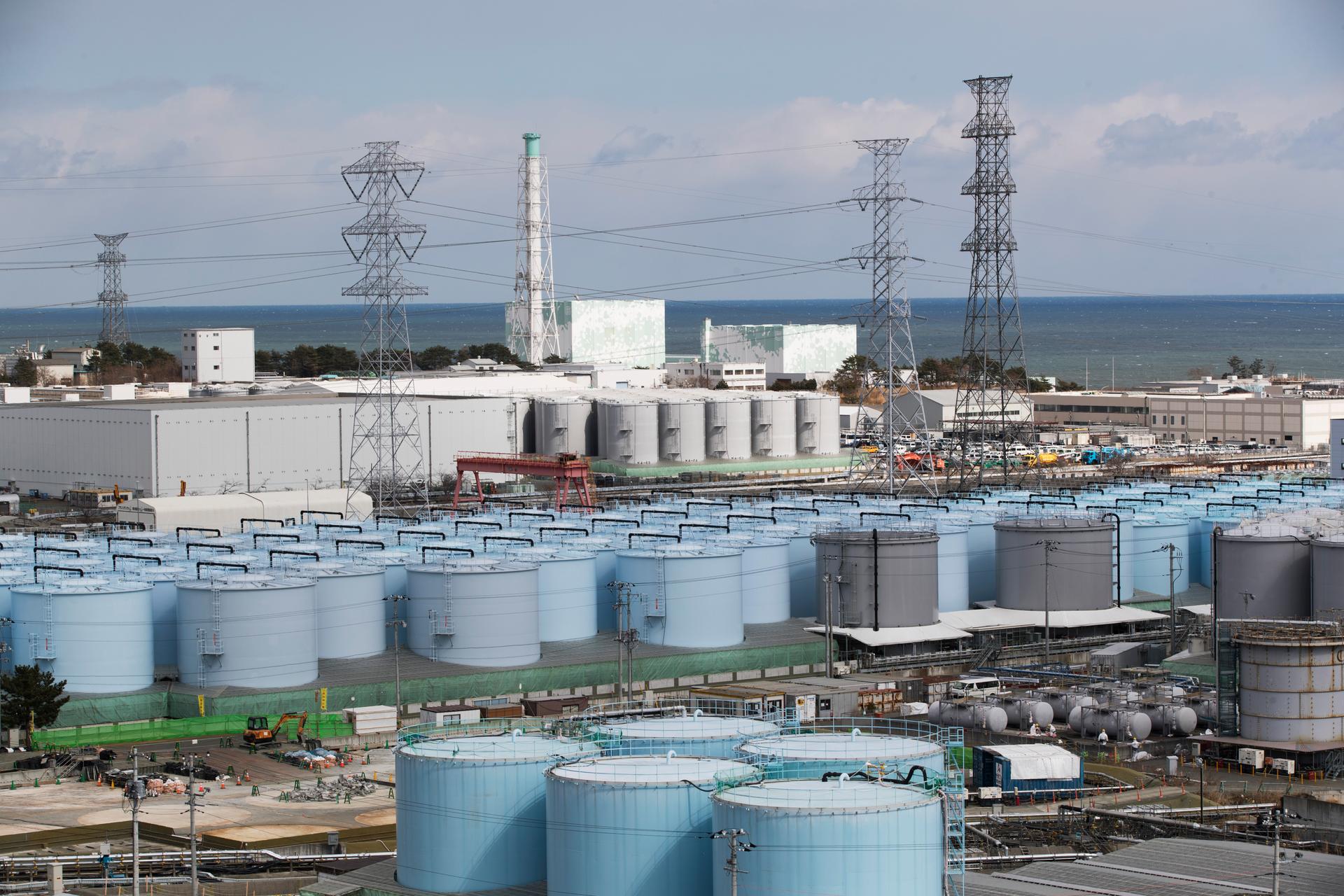Ten years after the Fukushima Daiichi nuclear power plant disaster, millions of gallons of radioactive cooling water are about to overflow storage tanks. Japanese authorities say they plan to release this water into the Pacific Ocean, sparking a public outcry.
When a four story-high tsunami struck Fukushima on March 11, 2011, it killed thousands and flooded the nuclear power complex. In the hours and days that followed, the cooling systems failed and the uranium cores in the three operating nuclear power reactors partially melted down, releasing deadly radiation. Authorities were eventually forced to evacuate an 80-square-mile zone around Fukushima.
Related: It’s been 10 years since Fukushima. What’s it like to rebuild in a city that ‘doesn’t exist’?
It was the worst nuclear accident in history, with the exception of Chernobyl in 1986 — and the Fukushima accident is not over yet. At least two cooling pools, created to prevent further meltdowns in the broken reactors, are leaking, forcing operators to pump in even more water to make up for the loss.
TEPCO, the Toyko Electric Power Company that operates the complex, will run out of space to store this radioactive water sometime next year. TEPCO and the Japanese government say the water has been treated sufficiently well with an Advanced Liquid Processing System (ALPS), which removes all radioactive substances except tritium, and that it is safe to pump it into the Pacific Ocean over a period of several decades.
Arjun Makhijani, president of the Institute for Energy and Environmental Research, says there are other ways to manage the excess water and “dumping it into the ocean is the most polluting and, in my opinion, the worst.”
“They can evaporate it slowly and emit it into the air,” he says. “There is some natural tritium that Mother Nature makes in the atmosphere. If it is small relative to that, the ecological impact would be much lower. The third option is simply to extract the tritium. Separating the tritiated water would isolate it, concentrate it, and it could be used in biological research.”
“Before an organization like TEPCO is allowed to pollute the oceans with strontium-90 and tritium…it should be on them to demonstrate that this is not going to severely disrupt the reproductive and energy systems of the living beings where they are going to dump this.”
The water could also be mixed with cement and put in storage for 70 or 80 years, by which time the radioactivity will have almost totally decayed, Makhijani adds. “So, there are options available that have much, much less ecological impact,” he says. “They are more costly, but in the scale of decommissioning costs and dealing with the Fukushima, none of these alternatives appear to be very costly. … I think before an organization like TEPCO is allowed to pollute the oceans with strontium-90 and tritium…it should be on them to demonstrate that this is not going to severely disrupt the reproductive and energy systems of the living beings where they are going to dump this.”
In addition, Makhijani adds, the Japanese authorities should think about how they will set a precedent for how to handle this kind of situation “in a way that’s respectful of future generations, that’s respectful of ecosystems and that’s respectful of your neighbors.”
Related: ‘The Journey Itself Home’: Reflections on moving forward after devastation in Japan
As the world moves toward decarbonizing its economies, disasters like Fukushima raise grave concerns about the safety of nuclear power, which proponents say must be part of any plan to move away from fossil fuels and reduce global greenhouse gas emissions.
Makhijani says he has looked at this problem as an electrical engineer. He has done an “hour-by-hour assessment over a four-year period” to determine if an electricity system that relies almost exclusively on solar and wind power, using smart grids and advanced storage systems, can work reliably and, if so, what it would cost. To his own surprise, he concluded that it was “possible, feasible and economical.”
“Fourteen years ago, I thought it would be very difficult because that was a time when solar energy was still very expensive and battery storage of electricity was also very expensive,” Makhijani explains. “Now, things in the energy sector have undergone an absolute technical revolution. … Solar and wind electricity are now the cheapest sources of new electricity. That’s not Arjun talking; that’s Wall Street talking.”
“You can accommodate a reliable, resilient, renewable energy system for cheaper than doing nuclear. From a time and climate urgency point of view alone, we should not be investing in nuclear.”
The Wall Street firm Lazard publishes an estimate every year of the costs of new electricity sources, Makhijani says. Solar and wind power are now estimated to cost about $40 per-megawatt-hour; nuclear is estimated to cost about $160 per-megawatt-hour — four times as much.
“Now, solar and wind need battery storage — demand response — [and] they need other things, but that [gap] between 40 and 160 is vast,” he says. “You can accommodate a reliable, resilient, renewable energy system for cheaper than doing nuclear. From a time and climate urgency point of view alone, we should not be investing in nuclear.”
Besides, he says, since the US Energy Policy Act passed in 2005, there have been more than 30 applications to build nuclear reactors. The country was supposed to see a “nuclear renaissance.” Of these more than 30 reactors, essentially all are dead except two, Makhijani notes. The two remaining reactors have faced long construction delays and huge cost overruns.
“So, this promise that nuclear was going to somehow solve the carbon problem has already failed and, just purely from a business point of view, we can’t afford it,” Makhijani says.
This article is based on an interview with Bobby Bascomb that aired on Living on Earth from PRX.
